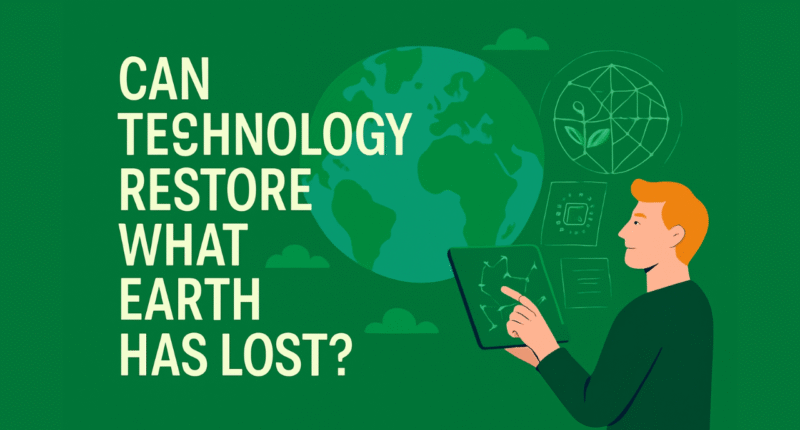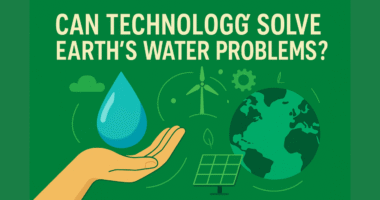The Earth has faced centuries of damage from deforestation, pollution, industrialization, and overconsumption. From disappearing forests to rising global temperatures, the question now is whether we can reverse the harm. With modern innovation, many wonder: Can technology restore what Earth has lost? While technology is not a magic fix, it offers powerful tools that can help heal the planet and support a more sustainable future.
The Damage Earth Has Suffered
Human activities have placed enormous pressure on natural systems.
-
Deforestation has destroyed habitats and reduced biodiversity.
-
Pollution from plastics, chemicals, and fossil fuels has contaminated land, water, and air.
-
Climate change has triggered extreme weather and rising sea levels.
Traditional conservation efforts are essential, but they often cannot keep up with the pace of damage. That’s why technology is becoming a vital ally.
Technology in Environmental Restoration
Modern technologies are being designed to reverse or slow down environmental destruction.
1. Reforestation Drones
Drones equipped with seed pods can plant thousands of trees in a single day. This speeds up reforestation in areas where natural regrowth is too slow.
2. Renewable Energy
Solar, wind, and hydropower reduce our reliance on fossil fuels. By lowering carbon emissions, renewable energy slows down climate change and gives ecosystems a chance to recover.
3. Water Purification and Ocean Cleanup
Advanced water filtration systems and ocean cleanup technologies are helping remove plastics and restore marine ecosystems. The “Ocean Cleanup Project” is already collecting tons of waste from rivers and seas.
4. Artificial Intelligence (AI) for Conservation
AI is being used to track endangered species, monitor illegal logging, and predict natural disasters. This data-driven approach allows for faster responses to environmental threats.
Can Technology Replace What’s Lost?
Technology can support restoration, but it cannot fully replace natural systems. For example, artificial trees can absorb carbon, but they cannot provide habitats like real forests. Ocean cleanup machines can collect plastic, but they cannot restore coral reefs destroyed by warming waters.
The Key: Balance Between Nature and Innovation
To truly restore Earth, we must combine technological innovation with sustainable human behavior. Without reducing overconsumption and waste, technology alone will not be enough.
Challenges Technology Faces
-
High costs: Many green technologies are expensive to scale.
-
Accessibility: Developing nations often lack access to advanced systems.
-
Dependence: Relying only on technology may cause people to ignore personal responsibility.
Conclusion
So, can technology restore what Earth has lost? The answer is partly yes. Drones, renewable energy, AI, and water-cleaning technologies are powerful tools that can help reverse damage. However, technology alone cannot fully replace the natural balance of ecosystems. True restoration requires a global effort that combines innovation with lifestyle changes, conservation, and respect for nature. Together, humans and technology can work toward healing the planet and ensuring a sustainable future.









